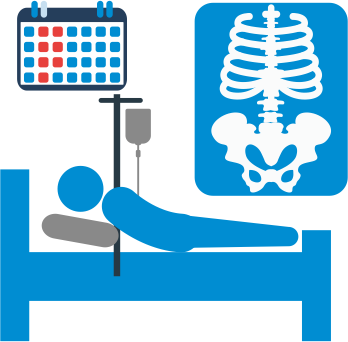How EMR and EHR are Fostering Digital Health Innovation
Hospitals in many developed nations are stepping up their facilities to provide better services to their patients, thereby improving the quality of life of their people. Healthcare providers are increasingly using information technology (IT) tools, such as Electronic Medical Records (EMRs) and Electronic Health Records (EHRs) to improve the efficiency of the hospital services, especially for managing patient data.
EMRs provide vital information about a patient’s medical history that can help healthcare providers choose the proper course of treatment for their patients and thereby avoid unnecessary tests or procedures, and unnecessary medical expenditure. EHR systems help enhance patient care, minimize the risk of errors, and above all, improve efficiency and productivity of staff. For example, according to an article published in the Harvard Business Review, 58 percent of patients referred to a noteworthy medical center in Seattle for back surgery were recommended surgery even when they could have been treated better without a surgery. It was also identified that many of the patients were being prescribed expensive MRI or CT scans, many of which were not appropriate. EMRs can help correct these systemic defects.
Though there are several impediments to adopting EMR or EHR systems, such as high initial investment and low returns, initial time to set up the systems, high training costs, high resistance to change from paper-based to paperless system, compatibility issues with other electronic data exchange with other systems, and security concerns, the benefits outweigh the issues involved. There are several advantages to both the physicians /caregivers, as well as the patients in implementing EMRs and EHRs.
- An EMR helps a hospital to go paperless as it contains all of a patient’s medical history from one practice. It also requires less physical storage space and frees administrative staff from mundane routine tasks like filling up and processing forms. It allows the interfacing with a billing program that submits claims electronically.
- It allows providers to track data over time and identify patients who are due for their routine checkup. It eliminates the issues of lost or misplaced patient files and data errors that can occur during transcription. It helps monitor the progress of a patients’ treatment and improves the overall quality of care.
- EHRs provide accurate and up-to-date information about patients quickly, enabling a coordinated and efficient care. Physicians can access the reports of multiple care providers simultaneously and get the complete history, including test results and the recommendations of other physicians, allowing efficient collaboration on multiple facets of a patient’s care. According to Dr. Robert E. Hoyt’s book, Health Informatics: A Practical Guide (the 6th edition), paper charts are missing 25% of the time, or some details are missing from the chart in 13.6% of patient encounters.
- EHRs allow the physicians to make informed clinical decisions and reduce wastefulness by not prescribing unnecessary medical tests and medication. According to the President’s Information Technology Advisory Committee, 20% of laboratory tests are re-ordered because previous studies are not accessible.
- EHRs encourage better health by promoting preventive treatments and better lifestyle practices. It improves the overall coordination between the various departments in a healthcare practice. A few large healthcare organizations in U.S.A showed that with their EHR systems, physicians could improve their focus on patients at risk. It also showed a 26.2% decrease in office visits over a four-year period.
- With paper prescriptions, there are chances of those getting misplaced or misinterpreted. Electronic prescriptions allow physicians to communicate directly with the pharmacists, thereby reducing errors and rejected scripts, and thus and save time.
- EHRs also help improve the communication with other clinicians, insurance providers, pharmacists and diagnostic centers, and speed up processes and outcomes.
With these benefits of EMR and EHR, it is not surprising that its implementation in the healthcare industry is fostering digital innovation worldwide. This is indicated by the increase in the number of implementations worldwide of EMRs and EHRs in hospitals in the U.S.A., Europe, Middle East, and Malaysia.
Accordingly, the Malaysian Government has encouraged hospitals to provide better healthcare by embracing EMRs and EHRs in their operations. However, only some public hospitals in Malaysia are using the EMR system to manage their filing system. The other hospitals are slow to adopt EMRs and EHRs due to various issues involved. These issues may influence the adoption of EMRs to improve healthcare quality service. As a result, an EMR Adoption model for public hospitals is proposed to provide a guideline to Malaysia’s public hospitals to adopt and use the EMR system successfully while simultaneously reducing the present problems of the adoption.
EMRs have undoubtedly changed how healthcare is managed today. With technology, the older methods of healthcare management are replaced with an integrated approach. Thanks to EMRs, healthcare providers have access to aggregate patient data and courses of action allowing them to take more informed decisions.
Conclusion
In spite of the initial slow acceptance of EMRs and EHRs by clinicians and healthcare organizations, they continue to grow with time. EMRs and EHRs are have been truly transformational for the healthcare organizations worldwide.




